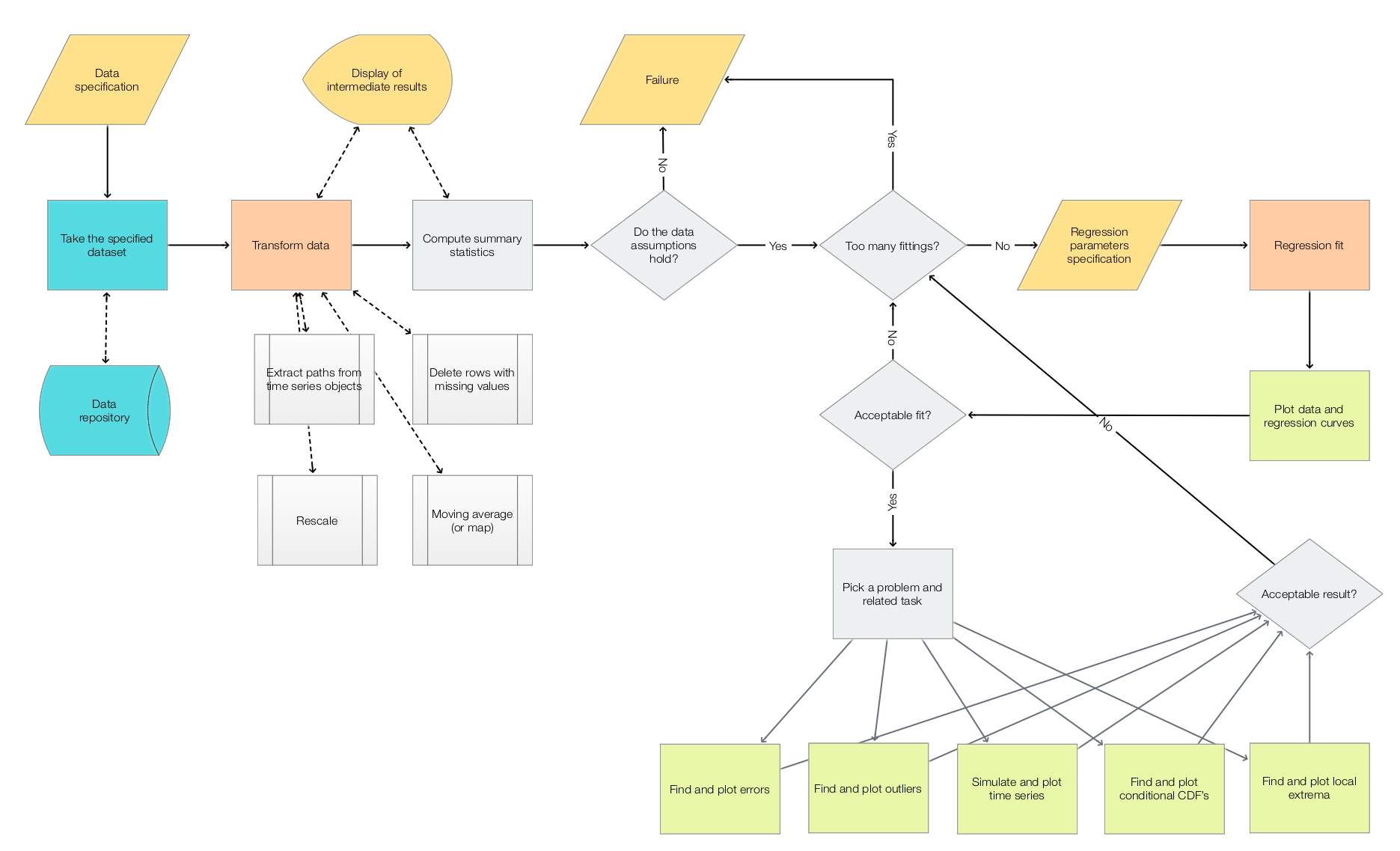Regression workflows package based on Least Squares Regression and Quantile Regression.
Project description
Regressionizer
Python package with a class that allows pipeline-like specification and execution of regression workflows.
Extensive guide is given in the Jupyter notebook "Rapid-specification-of-regression-workflows.ipynb" and the corresponding Markdown document "Rapid-specification-of-regression-workflows.md".
Features summary
-
The class
Regressionizerfacilitates rapid specifications of regressions workflows.- To quickly specify:
- data rescaling and summary
- regression computations
- outliers finding
- conditional Cumulative Distribution Functions (CDFs) reconstruction
- plotting of data, fits, residual errors, outliers, CDFs
- To quickly specify:
-
Regressionizerworks with data frames, numpy arrays, lists of numbers, and lists of numeric pairs.
Details and arguments
-
The curves computed with Quantile Regression are called regression quantiles.
-
Regressionizerhas three regression methods:quantile_regressionquantile_regression_fitleast_squares_fit
-
The regression quantiles computed with the methods
quantile_regressionandquantile_regression_fitcorrespond to probabilities specified with the argumentprobs. -
The method
quantile_regressioncomputes fits using a B-spline functions basis.- The basis is specified with the arguments
knotsandorder. orderis 3 by default.
- The basis is specified with the arguments
-
The methods
quantile_regession_fitandleast_squares_fituse lists of basis functions to fit with specified with the argumentfuncs.
Workflows flowchart
The following flowchart summarizes the workflows that are supported by Regressionizer:
Usage examples
Import libraries:
from Regressionizer import *
import numpy as np
Generate random data:
np.random.seed(0)
x = np.linspace(0, 2, 300)
y = np.sin(2 * np.pi * x) + np.random.normal(0, 0.4, x.shape)
data = np.column_stack((x, y)
Compute quantile regression for probabilities [0.2, 0.5, 0.8] and make the corresponding plot:
obj = (Regressionizer(data)
.quantile_regression(knots=8, probs=[0.2, 0.5, 0.8])
.plot(title="B-splines fit", template="plotly")
)
Show the plot obtained above:
obj.take_value().show()
References
Articles, books
[RK1] Roger Koenker, Quantile Regression, Cambridge University Press, 2005.
[RK2] Roger Koenker, "Quantile Regression in R: a vignette", (2006), CRAN.
[AA1] Anton Antonov, "A monad for Quantile Regression workflows", (2018), MathematicaForPrediction at GitHub.
Packages, paclets
[RKp1] Roger Koenker,
quantreg,
CRAN.
[AAp1] Anton Antonov, Quantile Regression WL paclet, (2014-2023), GitHub/antononcube.
[AAp2] Anton Antonov, Monadic Quantile Regression WL paclet, (2018-2024), GitHub/antononcube.
[AAp3] Anton Antonov,
QuantileRegression,
(2019),
Wolfram Function Repository.
Repositories
[AAr1] Anton Antonov, DSL::English::QuantileRegressionWorkflows in Raku, (2020), GitHub/antononcube.
Videos
[AAv1] Anton Antonov, "Boston useR! QuantileRegression Workflows 2019-04-18", (2019), Anton Antonov at YouTube.
[AAv2] Anton Antonov, "useR! 2020: How to simplify Machine Learning workflows specifications", (2020), R Consortium at YouTube.
Project details
Release history Release notifications | RSS feed
Download files
Download the file for your platform. If you're not sure which to choose, learn more about installing packages.
Source Distribution
Built Distribution
Hashes for Regressionizer-0.1.8-py3-none-any.whl
| Algorithm | Hash digest | |
|---|---|---|
| SHA256 | b2b80fda22e788dd28a7f5f5da77d4655da871b71a1aac384c279003f835844a |
|
| MD5 | dbde0ae1c19785e9bc58cc6f99b75085 |
|
| BLAKE2b-256 | 9daab2230f90613563dd63cf72b2a53adc74ff852295ce5b7c81c9455d05677f |













